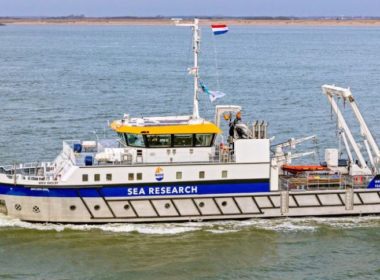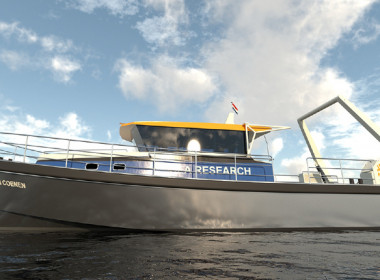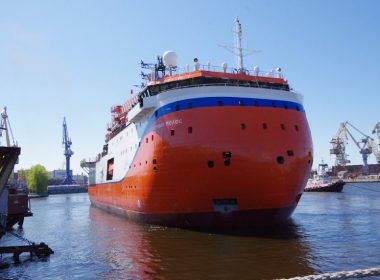VESSEL REVIEW | Wim Wolff – Coastal and mudflat research boat designed for Netherlands’ Wadden Sea

The Royal Netherlands Institute for Sea Research (Nederlands Instituut voor Zeeonderzoek; NIOZ) recently welcomed a new coastal research vessel into service.
The vessel has been named Wim Wolff after a Dutch ecologist who specialised in mudflat research. Aarnoud van de Burgt, the head of NIOZ’s National Marine Facilities Department, said the vessel is capable of both running dry on mudflats and sailing up to 20 nautical miles offshore.
Wim Wolff was built by Thecla Bodewes Shipyards to a design by Dutch naval architecture firm Conoship International. The vessel will be operated primarily in the North Sea, the Wadden Sea, and the Southwest Delta region into which the Rhine, Meuse and Scheldt rivers flow. It will replace Navicula, the NIOZ’s earlier and slightly smaller shallow-water research boat that has been in service for nearly 40 years.
The design brief was put together on the basis of the strategic plan of NIOZ, and in particular the research agendas of the NIOZ departments Coastal Systems (COS) and Estuarine and Delta Systems (EDS) and an inventory of the relevant and technically possible functional requirements of all conceivable local stakeholders, particularly in the marine and maritime sciences sectors. The resulting design brief formed the basis for the concept design for the construction of the new vessel.
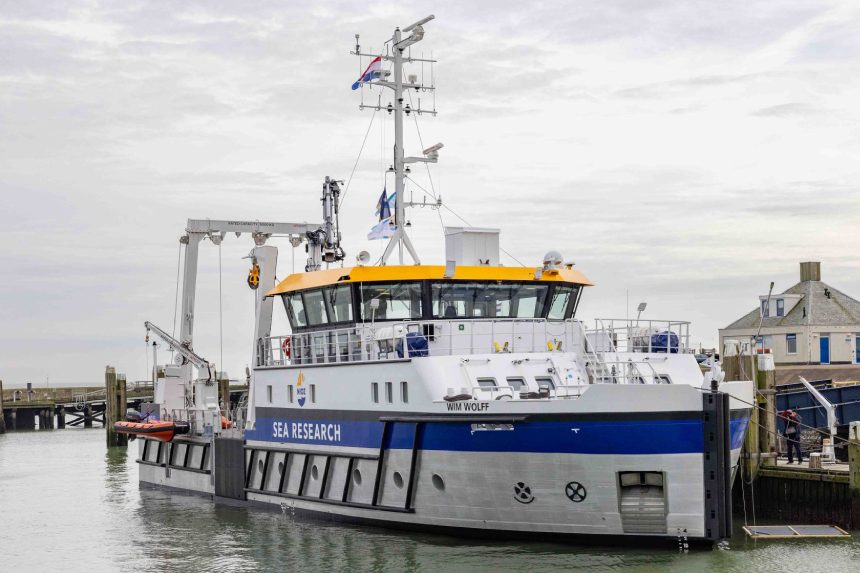
The design prioritises the use of green technology and the aim of staying within the limits of the maximum dimensions and draught to permit operations in shallow waters with the ability to beach if necessary. For Conoship, the design also highlights speed, efficiency, emissions reduction, and manoeuvrability.
Wim Wolff has an LOA of 36.95 metres, a moulded beam of 10 metres, a design draught of one metre, a moulded depth of 3.43 metres, a deadweight tonnage of 74, a gross tonnage of 420, and space for four crewmembers and up to 12 passengers.
The propulsion system supplied by D&A Electric includes batteries, two 250kW thrusters, and engines that can run on diesel or hydrotreated vegetable oil, though the engines may be modified in the future to operate on either hydrogen or methanol. A 100kW bow thruster is fitted to provide additional lateral manoeuvrability. Smart-Ship provided the vessel’s force-feedback manoeuvring controls.
The propulsion also generates only minimal noise emissions above as well as beneath the water surface, and there are no emissions of waste or sewage water.
Onboard facilities include wet and dry laboratories and a working deck with a total area of 125 square metres. Equipment on the working deck includes a 1.5-tonne deck crane and a five-tonne A-frame.
Wim Wolff was designed to have an operational service life of more than 30 years. Thecla Bodewes thus developed a modular energy concept with a propulsion train independent of the energy source system. This enables the use of alternative energy systems without the need for major conversion work. This then helps the vessel avoid the risk of its powerplant being outdated due to the introduction of a growing number of cleaner marine fuels in the future.
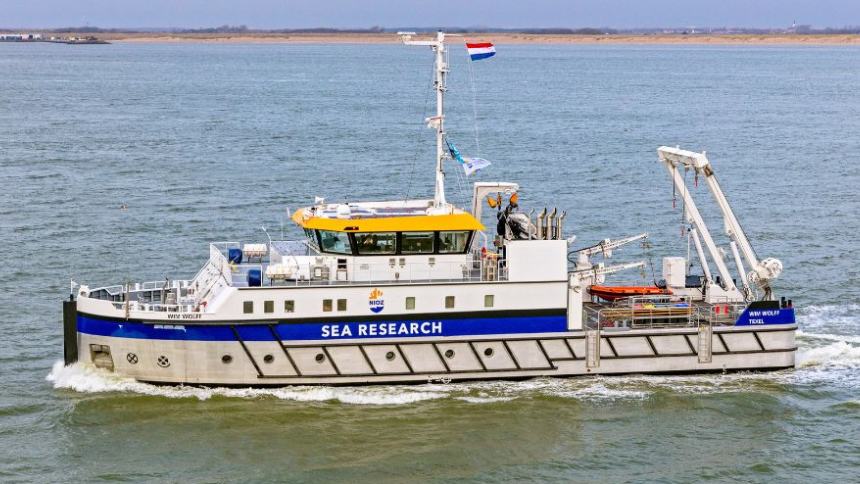
| Wim Wolff | |
| SPECIFICATIONS | |
| Type of vessel: | Research vessel |
| Flag: | Netherlands |
| Owner: | Royal Netherlands Institute for Sea Research |
| Designer: | Conoship International, Netherlands |
| Builder: | Thecla Bodewes Shipyards, Netherlands |
| Length overall: | 36.95 metres |
| Beam: | 10 metres |
| Draught: | 1.0 metre |
| Depth: | 3.43 metres |
| Deadweight tonnage: | 74 |
| Gross tonnage: | 420 |
| Main engines: | D&A Electric |
| Propulsion: | 2 x D&A Electric, each 250 kW |
| Side thruster: | 100 kW |
| Steering system: | Smart-Ship |
| Batteries: | D&A Electric |
| Other deck equipment: | A-frame |
| Types of fuel: | Diesel; hydrotreated vegetable oil |
| Accommodation: | Laboratories |
| Crew: | 4 |
| Passengers: | 12 |
| Operational areas: | Wadden Sea; North Sea |


